Description
In this section, I merged three different databases I implemented during my undergraduate years for various courses.
- Apartment Database
- E-commerce Database
- Famous ‘Supplier & Part’ Database
1- Apartment database
The main aim of this project was to make database creation, normalization and SQL understandable for students. This was a project in the university which we had to do, in the course which is called ‘Databases’. I chose the apartment management database because my father was our apartment manager then, so the cost, income and other data were available to me.
Data: The data was about one year of financial income and the outcome of our apartment. The image below is my raw data:
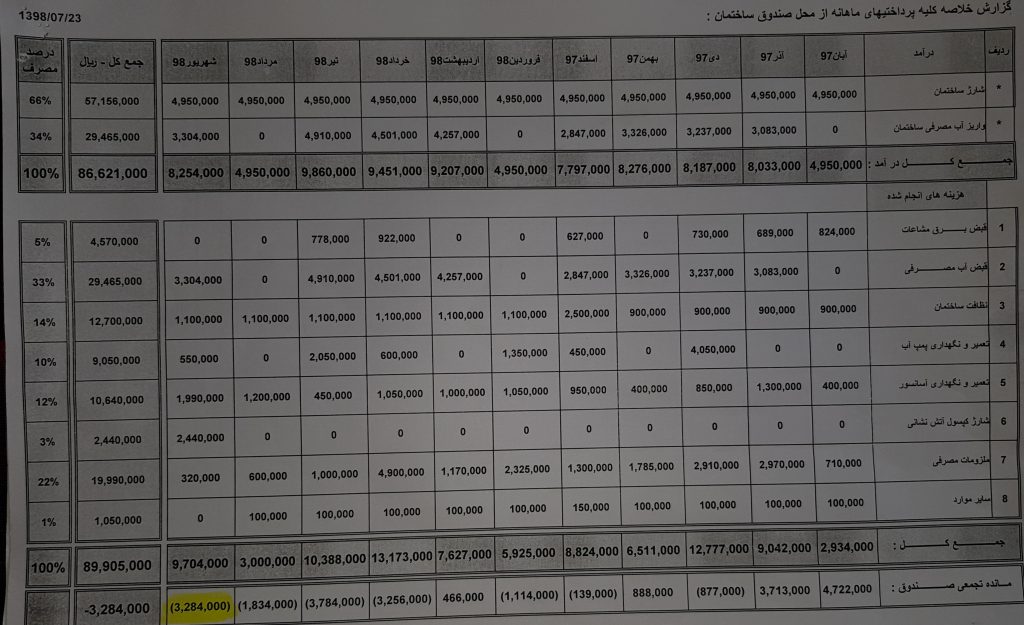
ERD: In this project, I first started to draw an appropriate ER diagram for my project to implement the database correctly. The below screenshot is my ER diagram:

Database Tables: After drawing ERD, I tried to create the tables and set their keys. The screenshot below is the project tables:
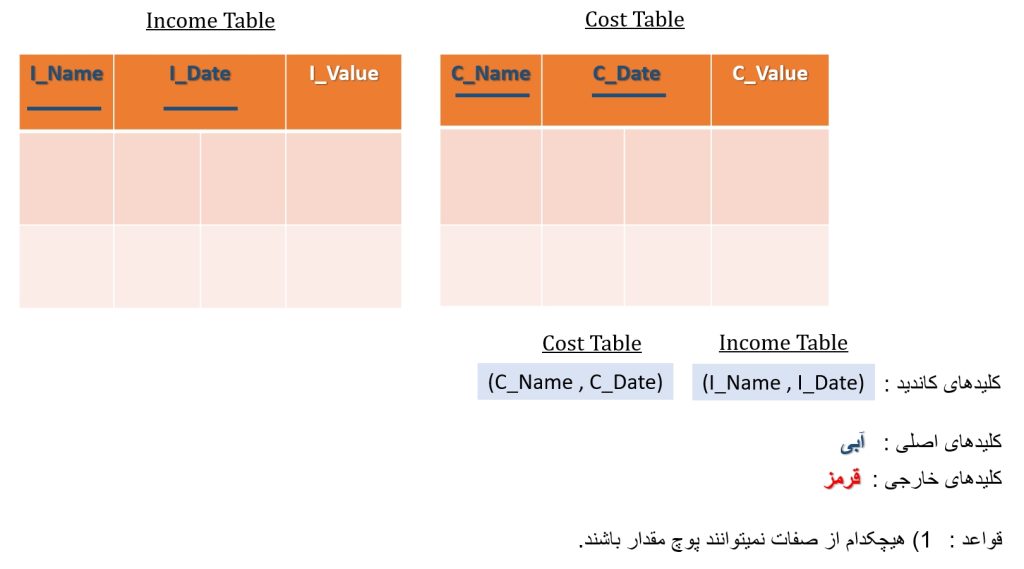
Normalization: I checked whether the created tables were standard in this part. The screenshot below is what I did to understand the tables’ normalization:

Challenges: We passed on some common challenges during the first time of implementing the database, such as declaring tables, ER Diagram and normalization. I had a difficulty that I successfully tackled. I had to deal with this challenge: every month’s debt and creditors should be considered to have the correct amount of money for each month.
Database Screenshot: Finally, I implemented my database on Microsoft SQL Server and, consequently, inserted my data using SQL:
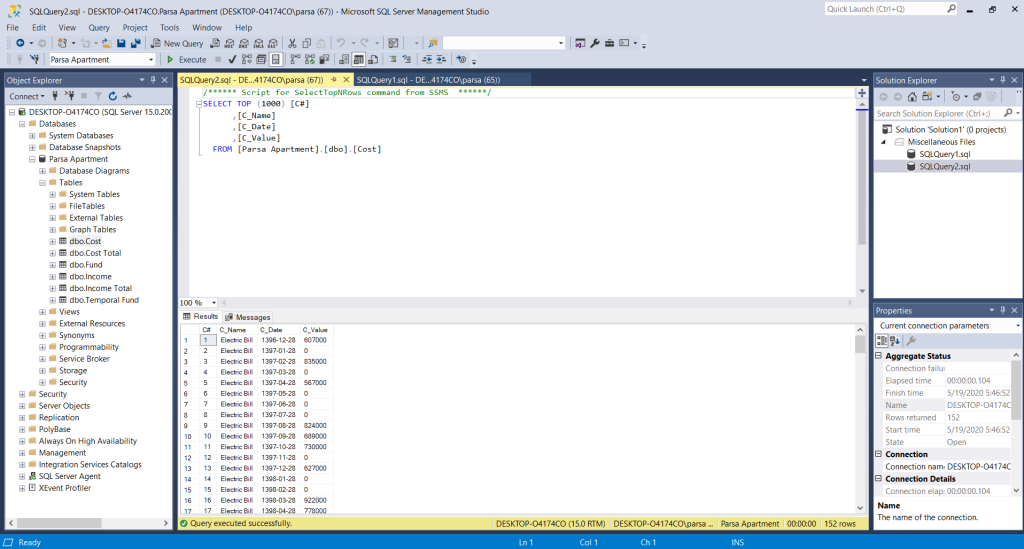
2- E-commerce Database
This was a project for the ‘Database Laboratory’ course. In this project, I had to implement an e-commerce websites database, like Coursera or Udemy.
Phase 1: I find the system requirements, define a course price calculation algorithm, list different features, and create databases and their specifications. The file that I made for this phase is downloadable from the below section:
Phase 2: I draw an appropriate ER diagram for the database in this phase. The ERD file is also downloadable from the below section:
3- Famous ‘Supplier & Part’ Database
This was a project for the ‘Database and System Implementation’ course. In this project, I used Microsoft SQL Server, implemented the given database, created some procedures, made some triggers, checked whether the database tables were normalized or not, and developed a mini software for the mentioned database – the software was developed for Windows OS using the C# programming language and Visual Studio IDE.
Tables Creation: In this part, I created the given tables and inserted some data:
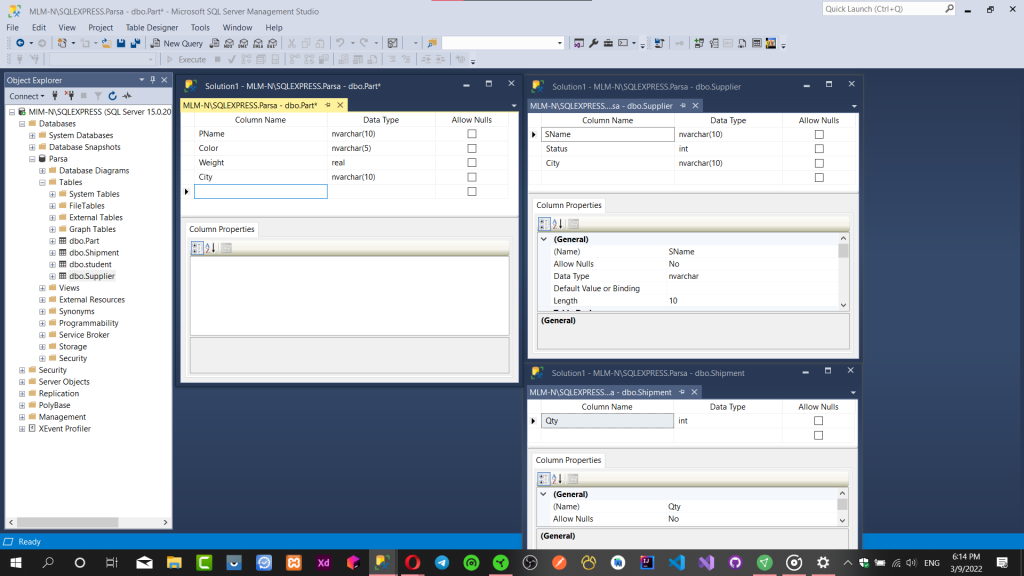
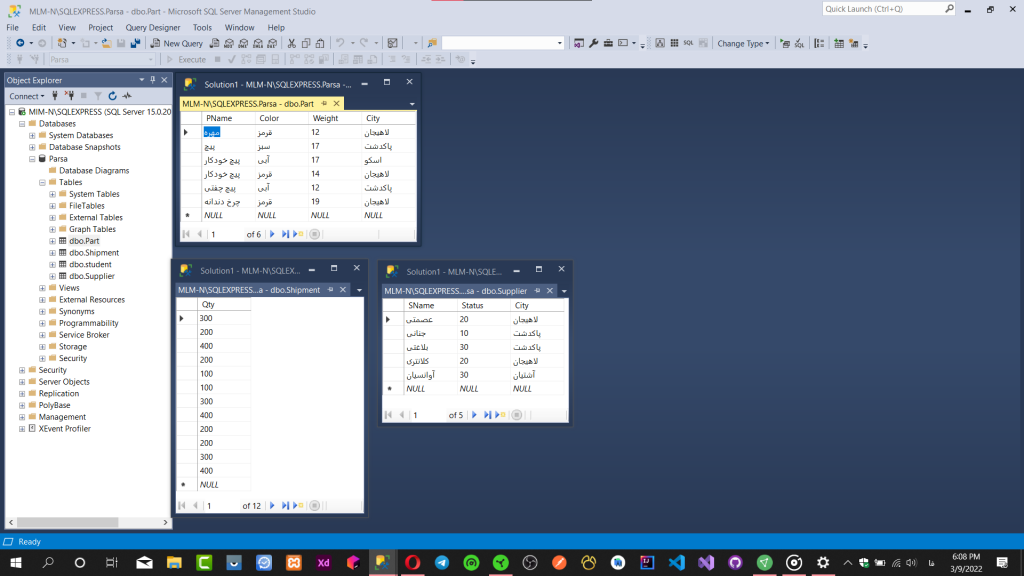
Procedure Definition: In the below screenshot, I made a procedure for the implemented database:
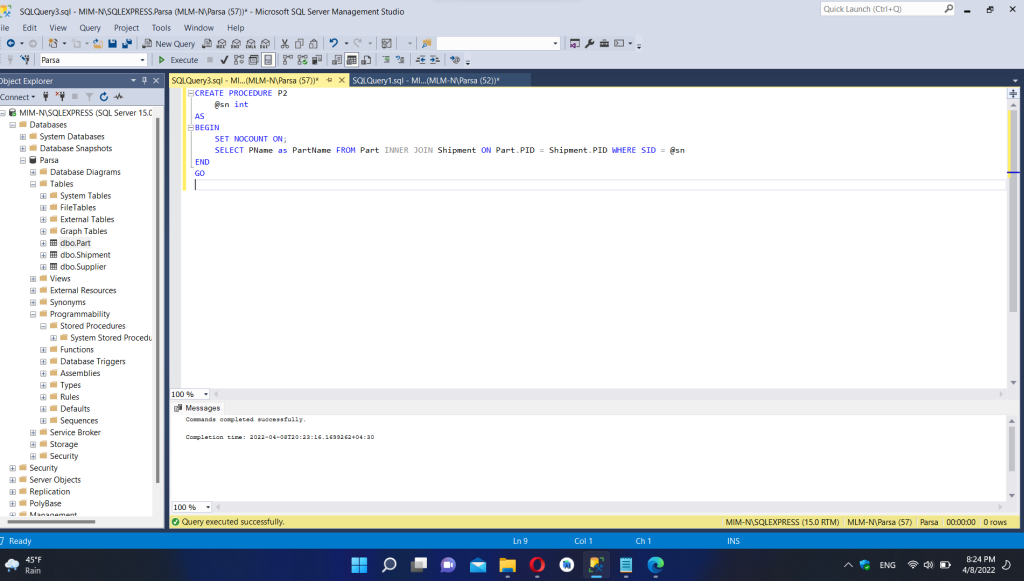
Trigger Definition: In this section, I defined a trigger to stop the database from inserting, deleting or updating anything on the ‘Shipment’ table if the Shipment quantity was better than 10000 and the Supplier name was ‘کلانتری’, then tested the defined trigger. The screenshots below are related to this part:
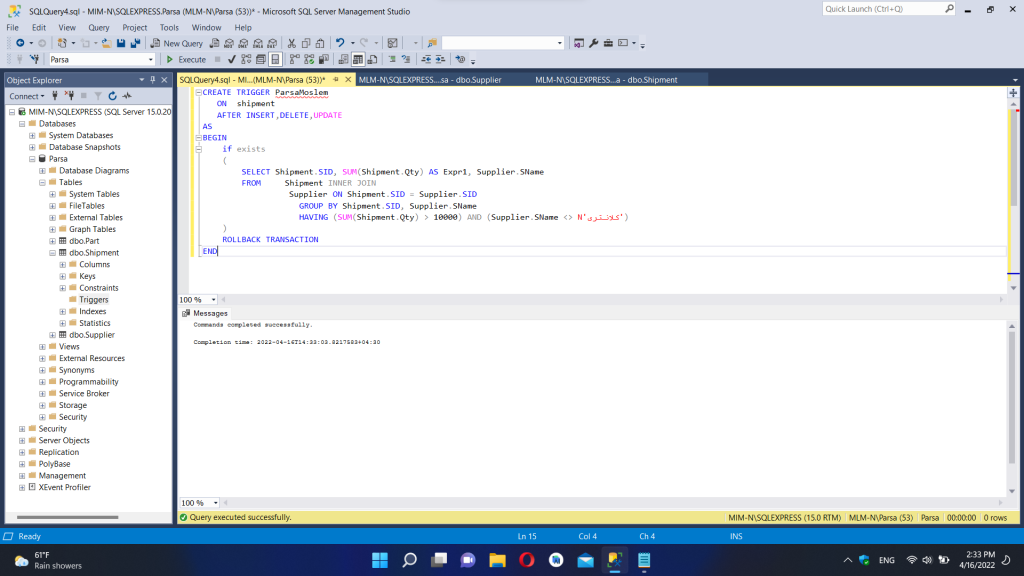
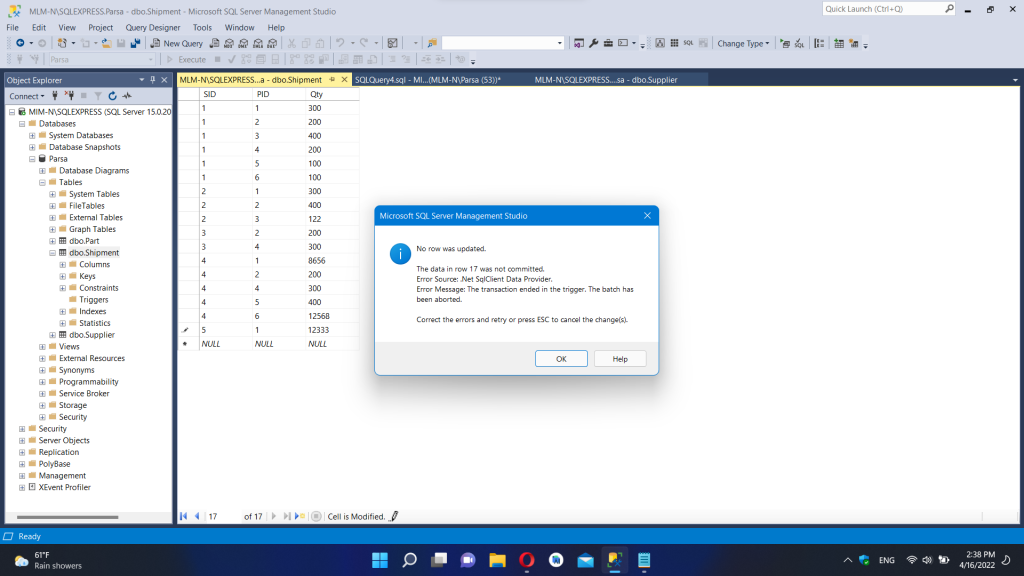
Software: In this step, I developed software for the noted database to insert tuples more conveniently. It was an example of software with databases in different workplaces. The software was developed with C# programming language in the Visual Studio IDE, and also able to check for some errors. The below screenshots are related to this part:
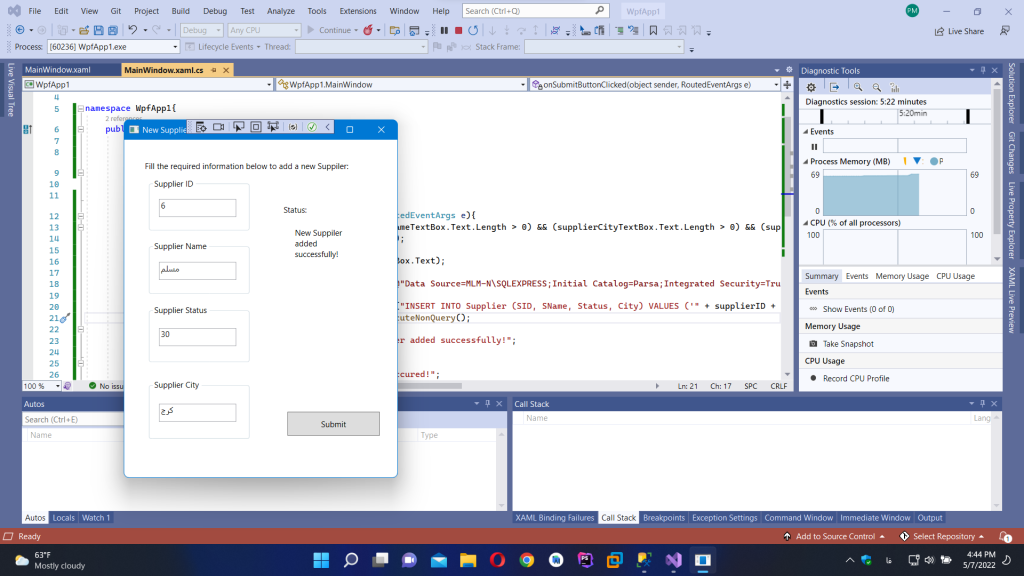
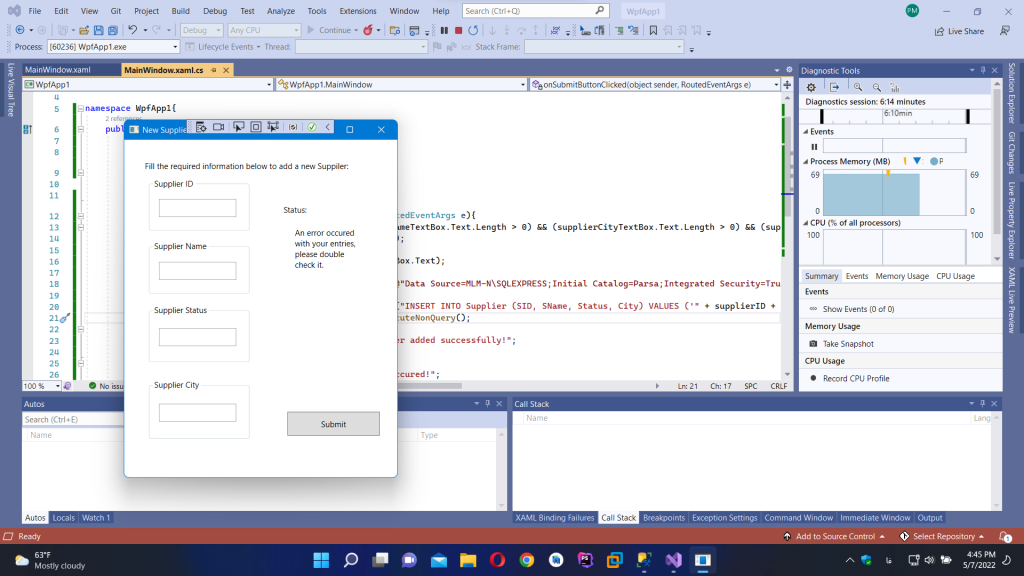
Also, the before and after database screenshots are available to show that the above software is working correctly:
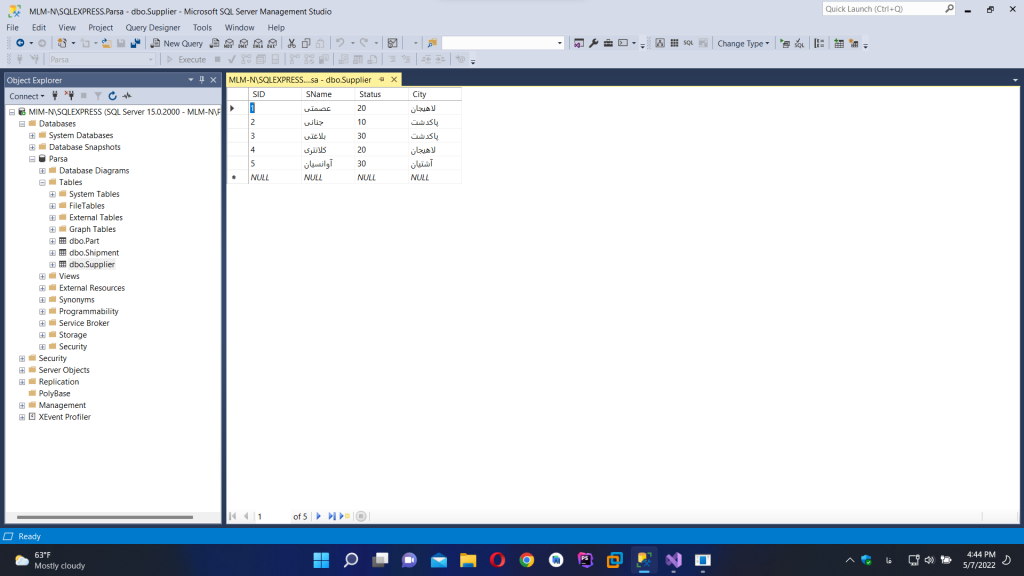
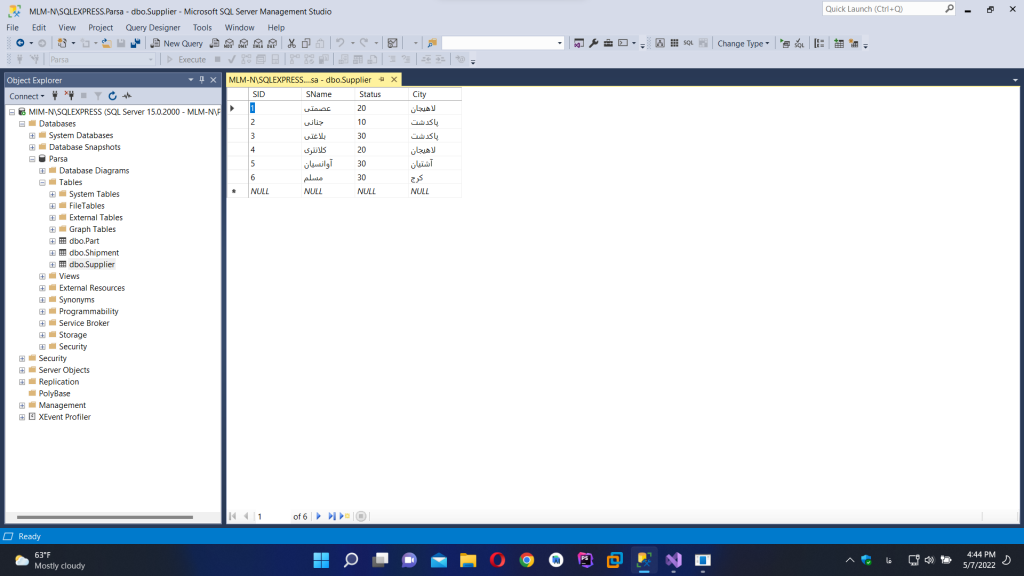
Transaction: In this stage, I also wrote a transaction for the given database. The screenshot:
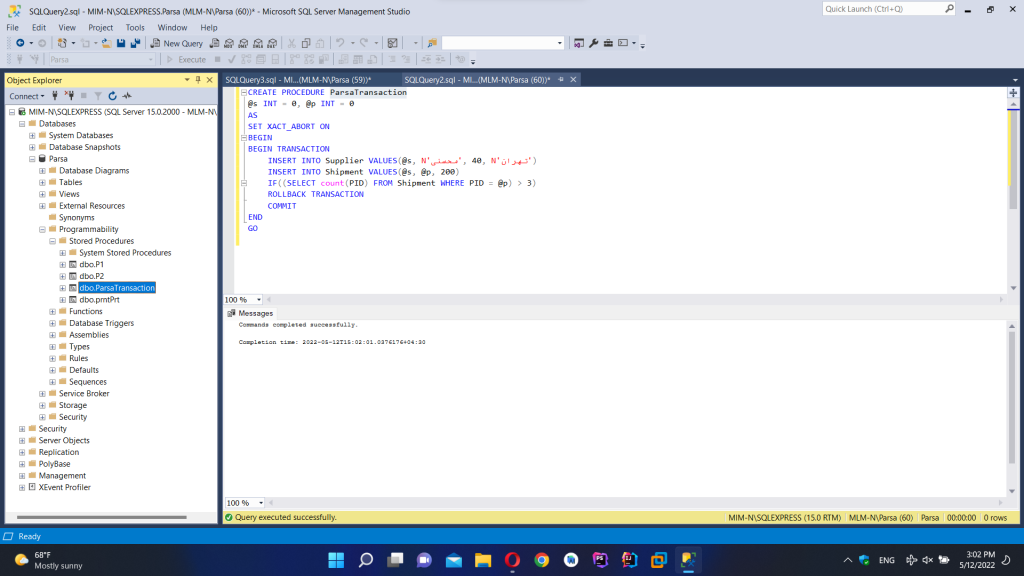
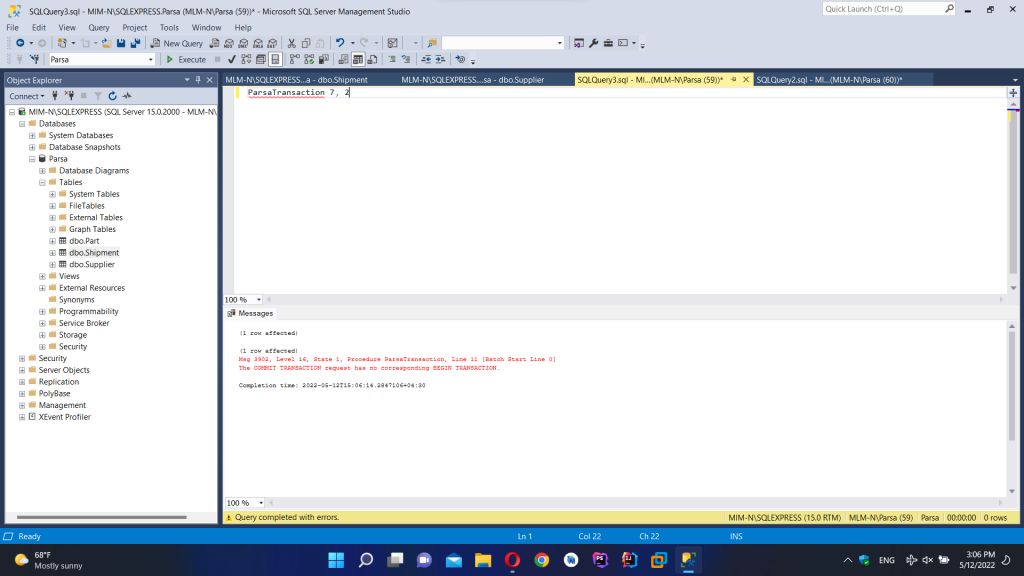
Optional Project
There was an optional project which we could create in the ‘Database and System Implementation’ course.
Project: Implementing a database with three different entities, marketers, sale places and products. Each marketer could work in one or many areas, and each area has one or many marketers. Each marketer has one or many products to sell, and each product is sellable by one or many marketers. Every product has to be sold in each place, but two marketers cannot sell the same product in the same area. I created a file for this project, and it is available to download in the below section:
